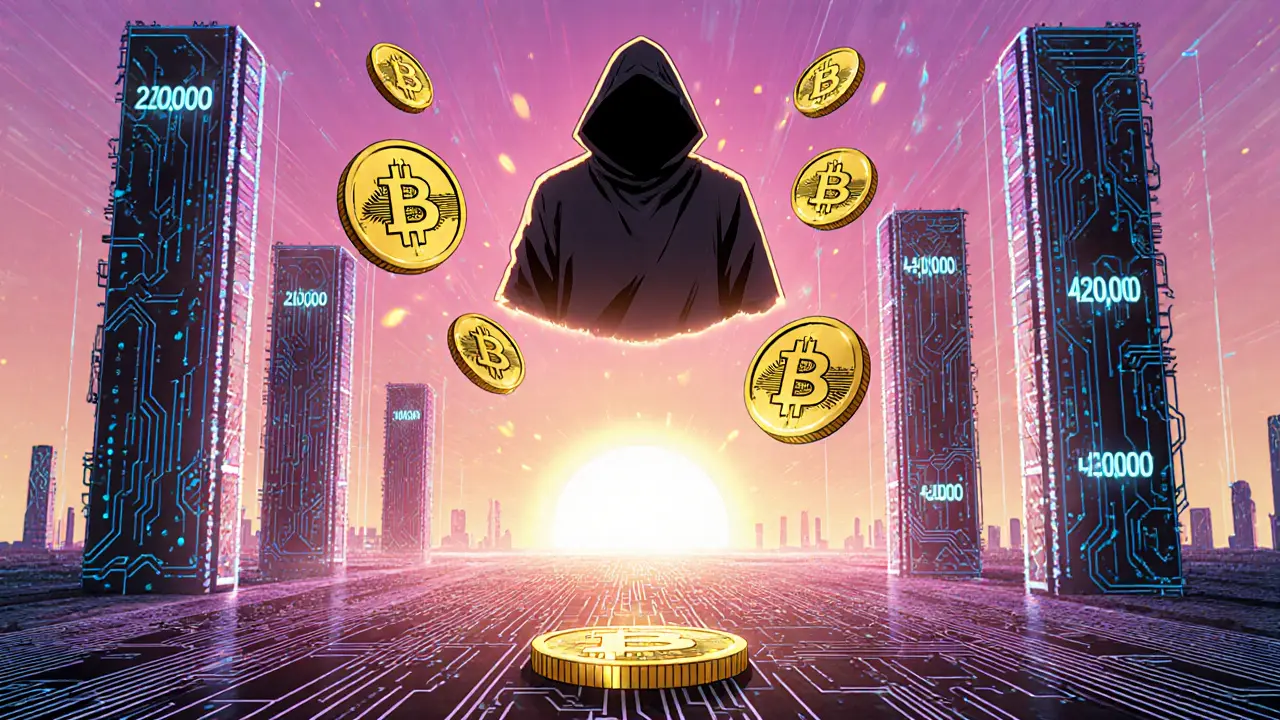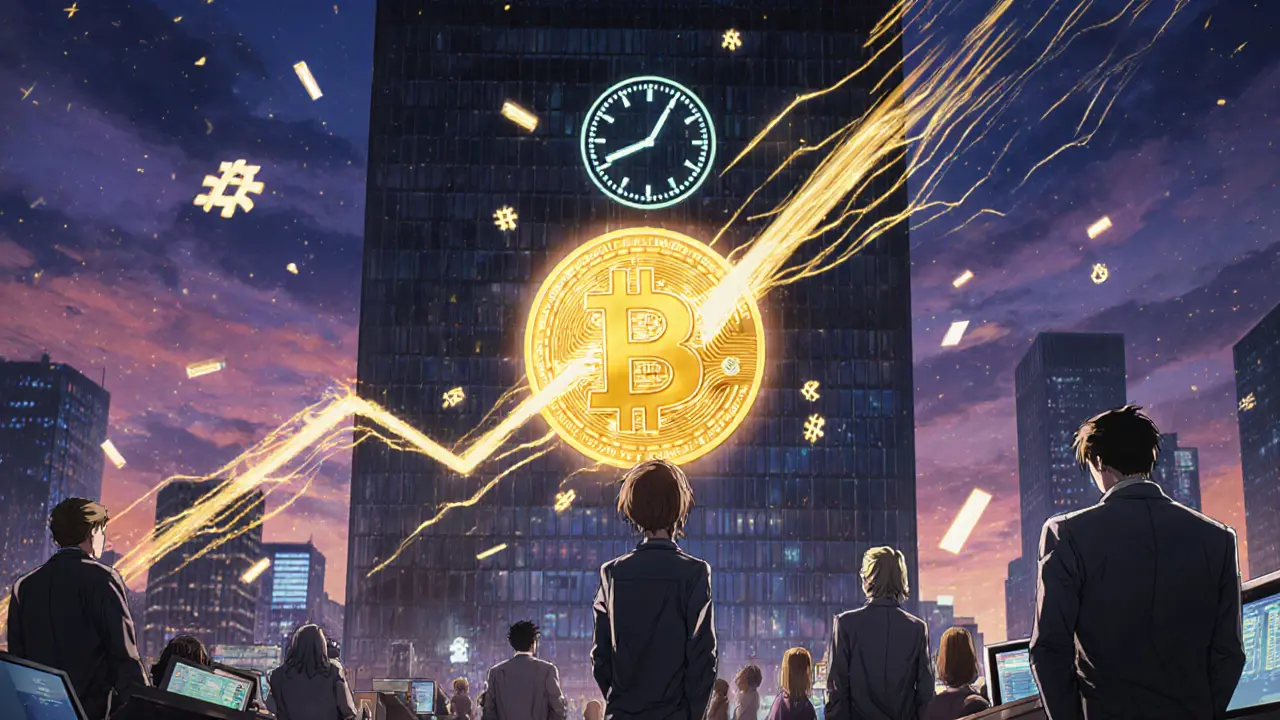Next Bitcoin Halving Date 2028 - How & When It Will Happen

The crypto community is already buzzing about the next Bitcoin halving. If you’ve been wondering when the reward cut will hit again and why it matters, you’re in the right spot. Below you’ll find a step‑by‑step look at how the halving works, the exact numbers that drive the countdown, and what traders and miners should expect as we head toward 2028.
What Is a Bitcoin Halving?
Bitcoin halving is a protocol‑level event that automatically reduces the block reward paid to miners by 50% every 210,000 blocks, roughly every four years. The mechanism is hard‑coded into the Bitcoin codebase on GitHub and requires no human intervention. By cutting the influx of new BTC, the halving preserves Bitcoin’s capped supply of 21million coins and gives the digital asset a built‑in anti‑inflationary property.
The idea traces back to Satoshi Nakamoto, the pseudonymous creator of Bitcoin, who outlined the supply schedule in the 2008 whitepaper. Each halving halves the issuance rate, mimicking the scarcity of precious metals and ensuring that new supply dwindles over time until the reward approaches zero around the year 2140.
How the Halving Schedule Is Calculated
Bitcoin’s block time averages about 10 minutes, but it fluctuates. The protocol triggers a halving exactly at block height 210,000, 420,000, 630,000, and so on. To estimate the upcoming date, you need three pieces of data:
- Current block height (as of today, roughly 919,200).
- Average block time over the most recent difficulty period (CoinWarz reports 592seconds, or 9min52sec, for the last 20,160 blocks).
- The target height for the next halving, which is 1,050,000.
Plug those numbers into a simple formula: remaining blocks ÷ average block time = seconds left → convert to days. Because the average block time can shift by a few seconds, the final date will only become precise a few weeks before the event.
Historical Halving Timeline
| Halving # | Date (approx.) | Block Height | Reward Before | Reward After |
|---|---|---|---|---|
| 1 | Nov282012 | 210,000 | 50BTC | 25BTC |
| 2 | Jul92016 | 420,000 | 25BTC | 12.5BTC |
| 3 | May112020 | 630,000 | 12.5BTC | 6.25BTC |
| 4 | Apr202024 | 840,000 | 6.25BTC | 3.125BTC |
| 5 (upcoming) | ~Jan232028 (estimate) | 1,050,000 | 3.125BTC | 1.5625BTC |
Each halving has been followed by a noticeable price rally, but the magnitude varies. For example, the 2020 halving saw a 107% price rise within six months, while the 2024 event produced a more modest 41% gain, partly because spot Bitcoin ETFs entered the market and regulatory clarity improved.

When Is the Next Halving Expected?
Multiple tracking platforms converge on early 2028. NiceHash's live calculator points to Jan232028 at 06:54UTC, while CoinCodex simply says "the first half of 2028" based on block 1,050,000. Binance notes that block‑time variance means the exact day could shift by a few weeks, but the window remains firm: roughly four years after the April2024 cut.
Why the slight spread? The network’s average block time currently sits under ten minutes (about 9min52sec). If the average were to drift toward the ideal 600seconds, the halving would slip later; a faster cadence would bring it forward. In practical terms, a 1‑second per‑block change translates to about a 2‑day shift over the full 210,000‑block interval.
Tools to Track the Countdown
Because the exact date tightens only as we approach the event, most enthusiasts rely on real‑time countdown tools. The most popular are:
- NiceHash Halving Calculator - pulls live block height from the network and updates the projected date every minute.
- CoinWarz - averages block time over the last 20,160 blocks, offering a smoother projection that’s less jittery.
- Binance Academy Halving Tracker - a visual timeline that also explains the economic impact.
All three agree on the 2028 window; the differences are just a few days. If you’re planning a trade or mining strategy, set alerts a month before the projected date and watch the block height climb toward 1,050,000.
What the Halving Means for Miners
When the reward drops from 3.125BTC to 1.5625BTC, miners lose half of their direct revenue per block. To stay profitable, they typically respond in two ways:
- Upgrade to more efficient hardware (e.g., newer ASIC models from Bitmain or MicroBT).
- Rely more on transaction fees, which have been trending upward as Bitcoin usage expands.
According to the Cambridge Centre for Alternative Finance, the top three mining firms (Marathon Digital, Riot Platforms, and Bitfarms) already control over 35% of network hash rate. Their scale gives them the cushion to absorb reward cuts, especially if fee revenue continues to rise.

Potential Market Impact
Historically, halvings tighten supply while demand either stays steady or grows, creating upward price pressure. However, the 2024 halving was the first to occur with widespread Spot Bitcoin ETFs and a much larger total crypto market cap (about $2.8trillion vs. $1.2trillion during the 2020 event). These factors could mute the price surge or shift the timing of the rally.
Analysts at ARK Invest expect a similar pattern to previous cycles but caution that institutional adoption, regulatory changes, and macro‑economic trends will play bigger roles. Binance's research team stresses that past performance is not a guarantee - sentiment, ETF inflows, and even geopolitical events could re‑shape the post‑halving price curve.
For long‑term holders, the halving is a reminder that Bitcoin’s monetary policy is predictable. For traders, the key window is typically the 3‑ to 6‑month period after the cut, when price movements historically intensify.
How to Prepare
Whether you’re a miner, investor, or casual observer, here are three practical steps you can take now:
- Monitor block height. Set up a daily alert on any of the three trackers mentioned above.
- Review mining economics. Run a profitability calculator (e.g., WhatToMine) using the projected 1.5625BTC reward and current electricity rates.
- Plan your entry/exit strategy. If you trade, consider allocating a portion of your portfolio to BTC ahead of the halving, but keep a stop‑loss in place for volatility spikes.
Remember, the exact date won’t lock in until the network’s average block time stabilizes, so keep a flexible outlook.
Frequently Asked Questions
What triggers a Bitcoin halving?
The Bitcoin software automatically cuts the block reward in half each time the blockchain reaches a multiple of 210,000 blocks. No human action is required.
Why does the halving matter for price?
Halving reduces the rate at which new BTC enters circulation, tightening supply. If demand stays constant or rises, basic economics suggest upward price pressure, which history has often confirmed.
How accurate are the projected dates?
Projections are based on the current average block time. As the network’s hash rate fluctuates, the date can shift by days or weeks. Expect the estimate to tighten within a few weeks of the event.
Will mining still be profitable after the reward halves?
Profitability will depend on hardware efficiency, electricity costs, and transaction‑fee revenue. Many large miners already factor in future halvings, so the industry is expected to stay viable, especially as fees rise.
What should I watch for around the halving?
Track the block height, monitor fee market dynamics, and keep an eye on institutional inflows (e.g., ETF purchases). These signals often precede the biggest price moves.
In short, the next Bitcoin halving is slated for early 2028, most likely around January23. The exact day will firm up as the blockchain approaches block1,050,000. Whether you’re mining, investing, or just watching, the countdown is a great reminder of Bitcoin’s unique, pre‑programmed scarcity.
Pierce O'Donnell
August 9, 2025 AT 20:58Another overhyped halving prediction that’ll probably flop.
Vinoth Raja
August 23, 2025 AT 11:58Yo, the halving’s just a protocolic supply‑shock event, nothing mystical. The network’s hash‑rate dynamics and difficulty retargeting dictate block intervals, so the exact timestamp is a moving target. When you factor in mining economics, the reward cut serves as a built‑in incentive for hardware efficiency upgrades. It’s a classic case of algorithmic scarcity driving market perception, not some divine prophecy. Bottom line: the numbers will align when the math says so.
Kaitlyn Zimmerman
September 6, 2025 AT 02:58Halving basically cuts new BTC in half every 4 years its like a scheduled deflation plan it keeps scarcity alive and miners adapt with newer rigs the fee market also picks up as block rewards shrink watch the block height and you’ll see the trend
DeAnna Brown
September 19, 2025 AT 17:58Wow, if you think this is just a number‑crunch, think again! The US miners are already gearing up for the next round, and it’s a patriotic duty to keep the blockchain humming. Everyone else will be left scrambling when the reward drops, but we’ll stay ahead of the curve! Trust me, the drama is real and the stakes are huge.
Chris Morano
October 3, 2025 AT 08:58It’s encouraging to see the community planning ahead, even if the timeline feels distant. Staying optimistic helps us keep perspective as the network evolves. Keep eyes on the metrics and you’ll be fine.
Ikenna Okonkwo
October 16, 2025 AT 23:58The upcoming Bitcoin halving is more than a mere emission schedule adjustment; it is a profound illustration of algorithmic monetary policy in action. Every four years, the protocol enforces a 50% reduction in block rewards, which mathematically reduces the rate of new supply entering the market. This deterministic scarcity mechanism mirrors the principles of limited resource economics, where supply constraints can drive value appreciation if demand remains constant or grows. Historically, these halving events have coincided with notable price rallies, though the magnitude has varied due to broader macro‑economic factors and market maturity. As institutional participation deepens, the price dynamics may evolve, but the underlying incentive structure remains unchanged. Miners, facing a halved reward, must adapt by either deploying more efficient ASIC hardware or relying increasingly on transaction fees to sustain profitability. The fee market, bolstered by higher on‑chain activity, can partially offset the reduced subsidy, especially during periods of heightened network usage. Moreover, the halving serves as a built‑in checkpoint for the community, prompting reassessment of mining economics, investment strategies, and long‑term outlooks. From a philosophical standpoint, the predictability of Bitcoin’s supply curve stands in stark contrast to fiat systems, which are subject to discretionary monetary policy. This predictability fosters a sense of trust among participants, reinforcing the narrative of Bitcoin as “digital gold.” However, it also places pressure on miners to continuously innovate and optimize, lest they become unprofitable. The upcoming 2028 halving, projected for early January, will occur in an environment where transaction fees are likely higher, and the ecosystem more mature, potentially cushioning the impact on miners. For investors, the halving window traditionally offers a strategic entry point, as price volatility often intensifies in the months surrounding the event. Yet, it is crucial to remember that past performance does not guarantee future results, especially as external variables such as regulatory developments and geopolitical events can influence market sentiment. In summary, the next halving encapsulates the intertwining of technical protocol design, economic theory, and market psychology, making it a pivotal moment for all stakeholders in the Bitcoin ecosystem.
Hailey M.
October 30, 2025 AT 14:58Oh great, another "must‑watch" countdown, because we totally need a reminder every few years 🙄
Sure, set your alerts and pray the price rockets, but remember the market loves drama more than facts.
Good luck surviving the hype!
Schuyler Whetstone
November 13, 2025 AT 05:58Seriously? People still fall for this hype train. Wake up! It's just a code change not a magic money printer.
David Moss
November 26, 2025 AT 20:58What they don’t tell you is the hidden agenda-big firms are using the halving to manipulate the market.
Stay skeptical.